Video exampler: here Singles and slow-mo: soon… Recommended prerequisites: cartwheel, hand releasing cartwheel, orthodox cartwheel, southpaw cartwheel Description: The aerial is a cartwheel without hands. Before “diving” into this move (pun severely intended), you need to have a solid cartwheel foundation and a decent enough flexibility foundation. Both sort of go hand in hand. [...]
Video exampler: here
Singles and slow-mo: soon…
Recommended prerequisites: cartwheel, hand releasing cartwheel, orthodox cartwheel, southpaw cartwheel
Description: The aerial is a cartwheel without hands. Before “diving” into this move (pun severely intended), you need to have a solid cartwheel foundation and a decent enough flexibility foundation. Both sort of go hand in hand.
All in all, the aerial is one of the easier “flipping” tricks to get into because it’s progressive and you have your hands as landing gear to safeguard you from discomfort. As a bonus, it’s one of the more versatile tricks that leads into a rabbit hole is nifty aerial based tricks.
Slide by slide breakdown
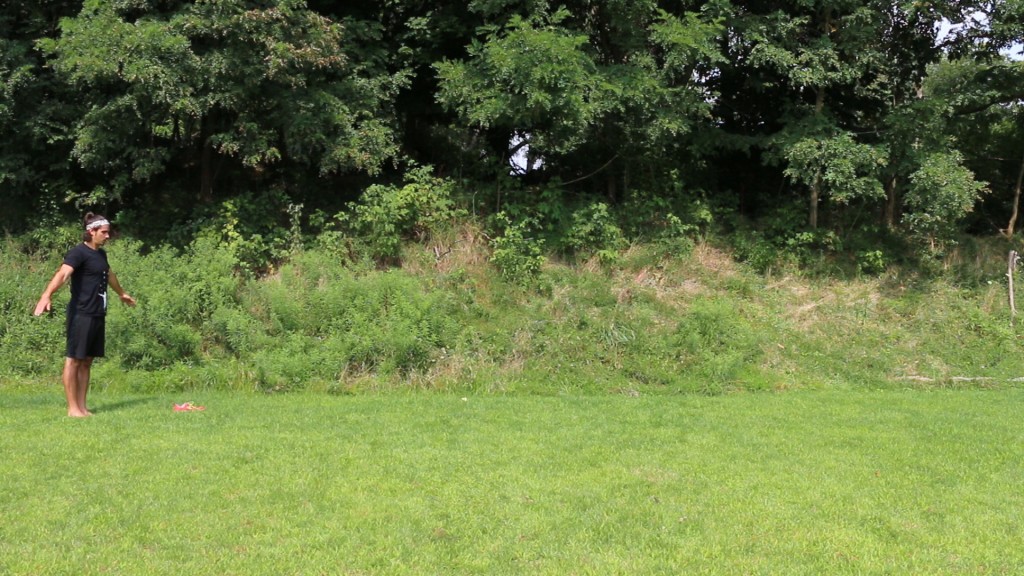
Start in a relaxed position. My hands are out by my side because the hands (specifically the shoulders) are such an important part of the trick that I queue their purpose into my head before anything else.
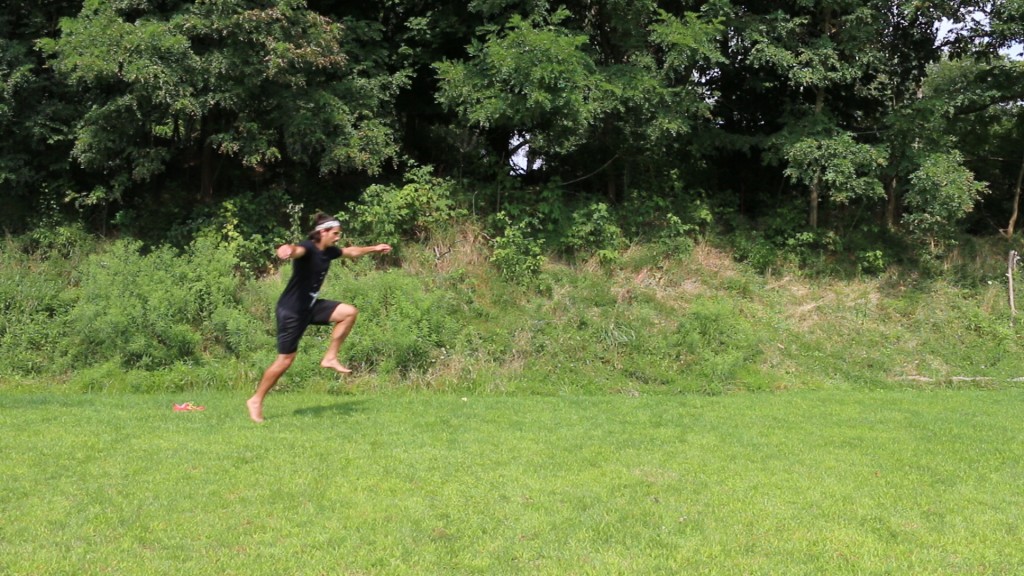
After a few steps, I bring my leading knee towards my chest and take a hope. My hands are wide and they are wide for a reason. Keep your hands up!
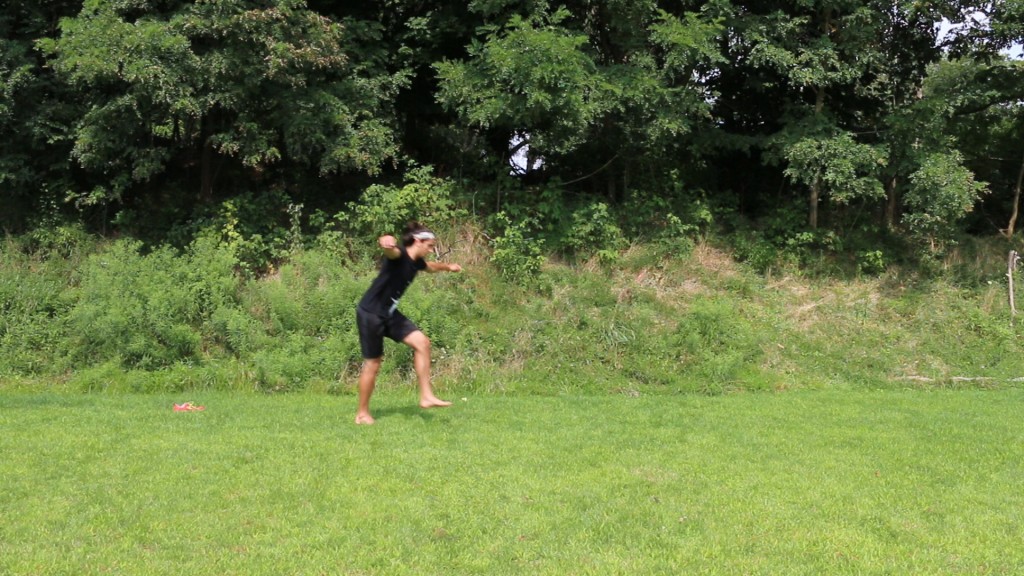
This slide is where my trailing foot plants into the ground after the initial hop. I paused it here for two reasons. First, look at my eyeballs. They should be looking where you want to go. More on the details here in a bit. Second, take note of my body position. Next slide is your guide.
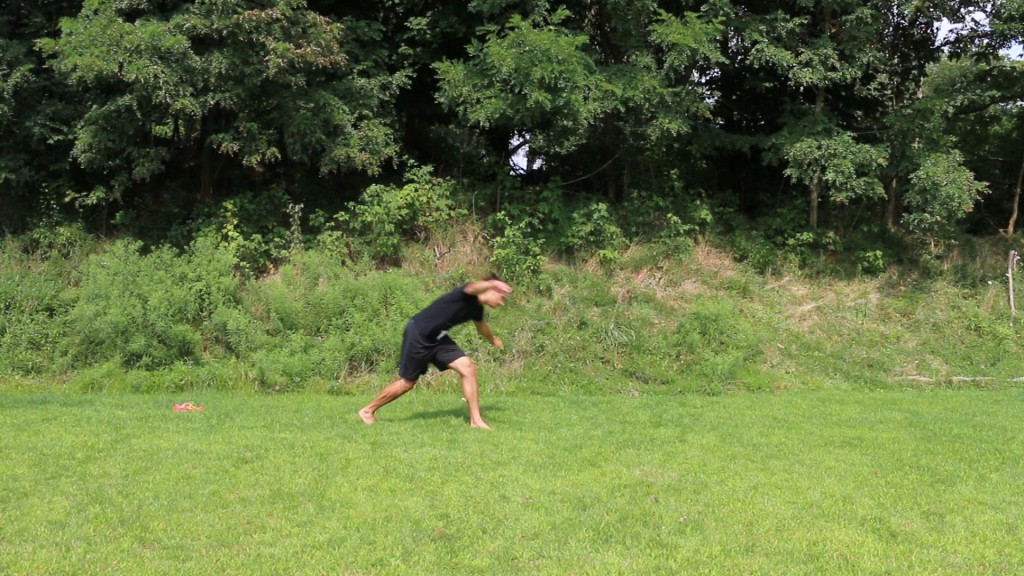
Even though my trailing leg plants, my body still moves forward. (This was the point of the lead in from the second point in the previous slide.) My leading leg planted a on line with my body momentum, not behind it. You can’t get behind yourself, else you won’t get enough push. See how vertical my shin is? This is because my momentum is going to keep going forward.
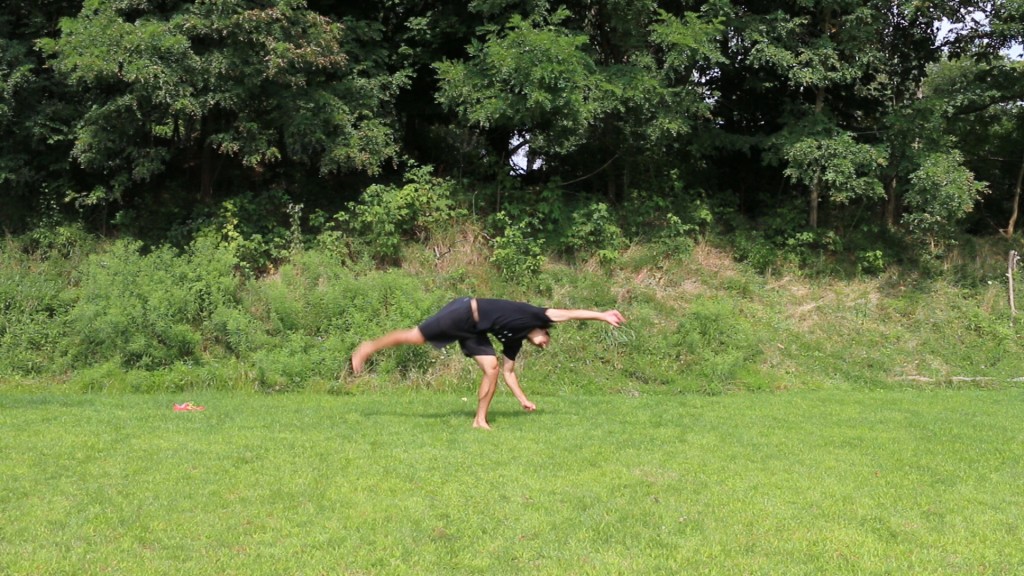
Remember I mentioned the eyes? The eyes look to where you want to go. Ideally, you want your torso to be horizontal to the ground. That’s the absolute best way to maximize height. You don’t want to have an excessive downward angle, else you’ll aerial your face into the ground. Alright, alright…you probably wouldn’t land on your head, but you wouldn’t get much height. My torso has a slight toward pitch, which is fine. It’s close enough to horizontal to get me some height.
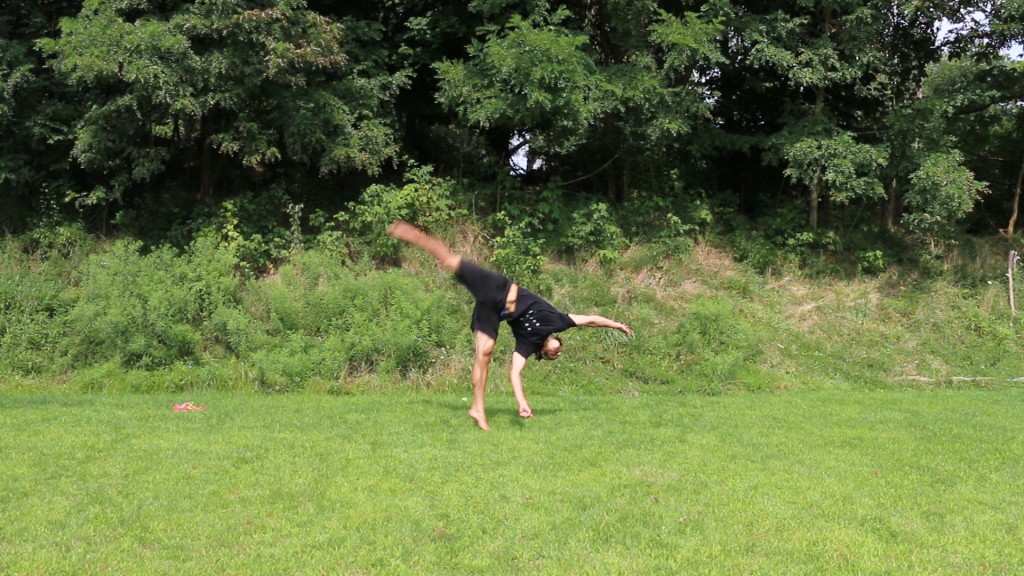
Now, onto some of the specifics. The lifting leg goes back. Hard. Act like you’re lifting it not only high in the air, but behind your body. See (1) below for this. My left arm is doing a lot of work too. I’m thinking about bringing my left elbow in across my body. See (2) below. My right arm is opening up and sort of slinking over my body. See (3).
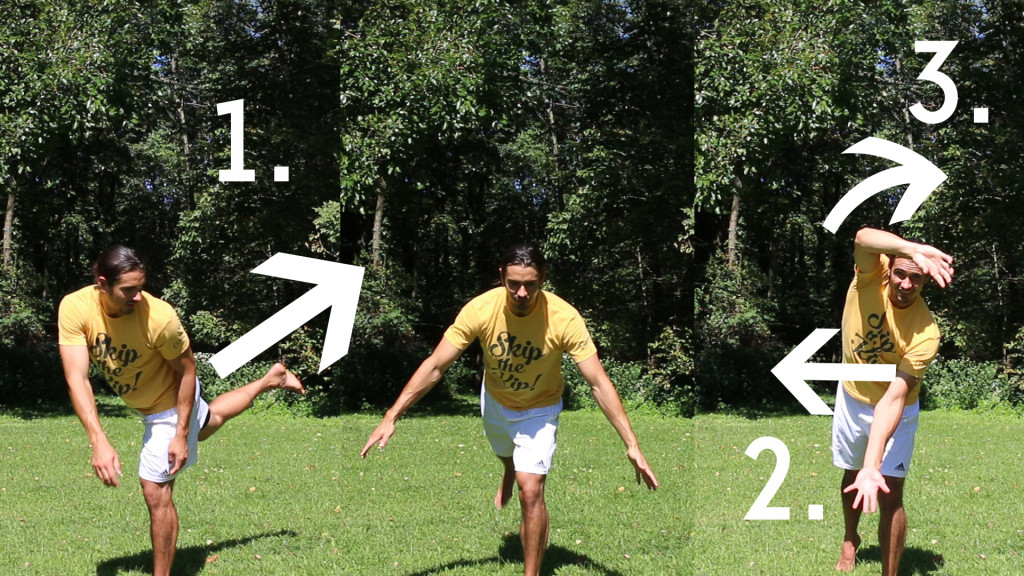
Silently underneath all of this, there’s one last important mention: keep your upper body in front of the lead leg. Go back and look at the previous slide. My upper body isn’t being launched behind my leg, but rather in front of it. Your upper body leads you into the move, so keep it in front of yourself.
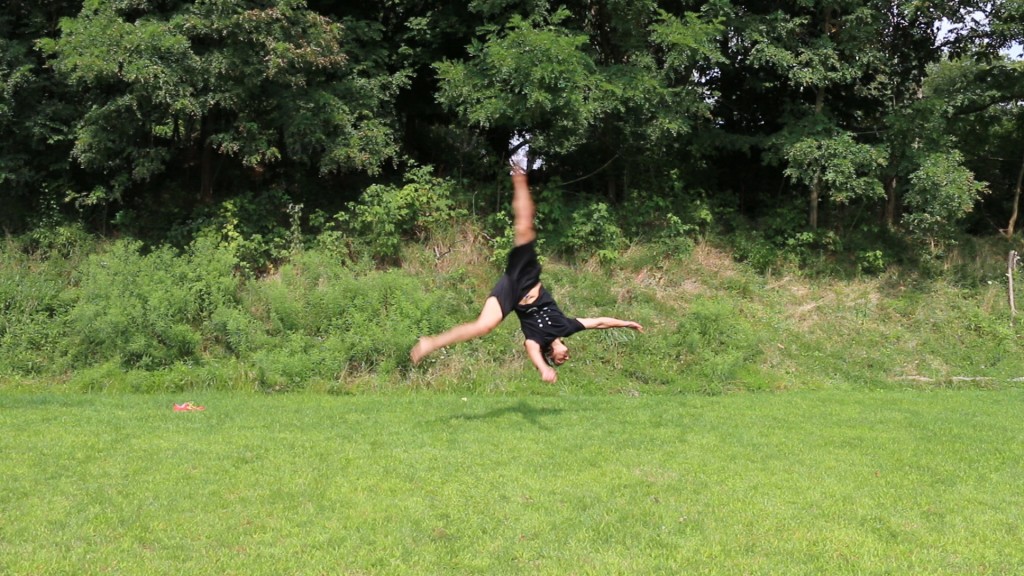
When all of those arm actions combine, my torso turns over to face the direction of travel. That’s when you know you’re doing a good aerial. Your torso rips your body through.
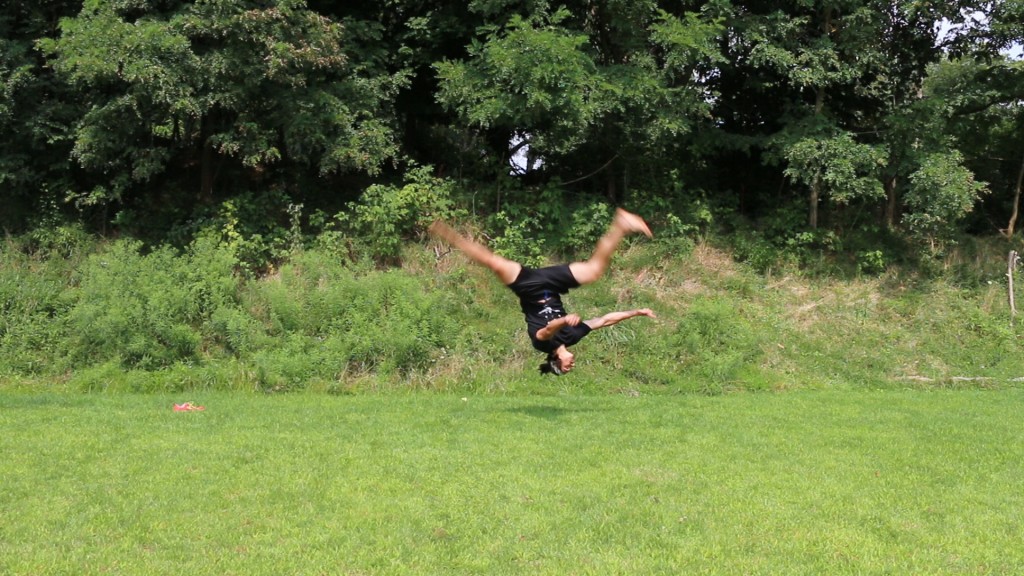
The previous point is better explained here. Look at my arms. They’re “closing,” in a sense, and my leg is going to plop right between them. Sometimes tricksters do “trickster” aerials, which usually have the torso open the entire move. If you want to move into advanced aerial tricks, you need to learn how to take the aerial over the top (do a gymnast aerial) rather than side-to-side.
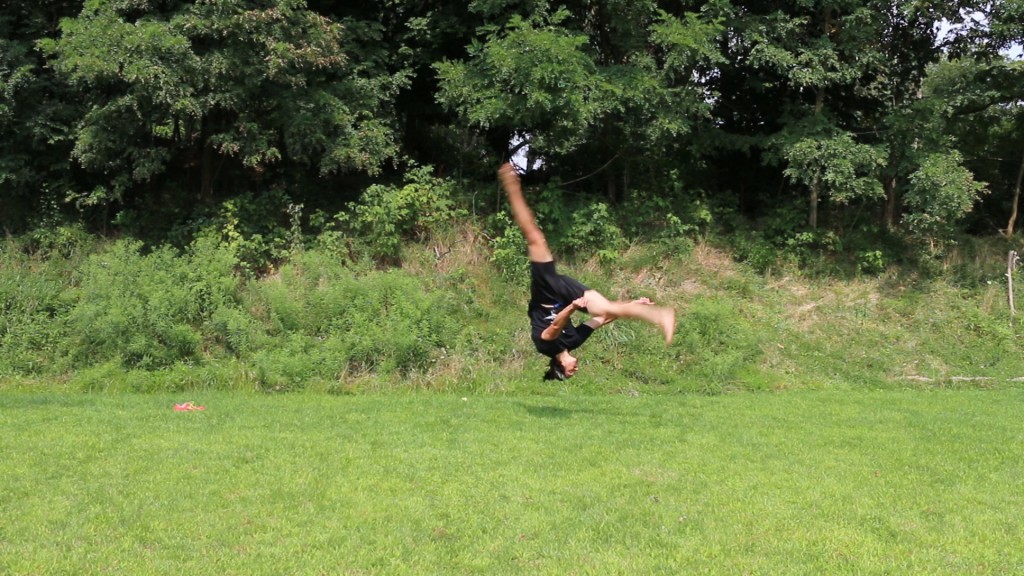
A good sign of taking the aerial over the top: your first landing leg cuts the space in between your arms in half. It’s not uncommon to do aerials where the arms get mangled and the right arm (well, my right arm) gets caught in front of the landing leg. If this is happening, you need to go back to (1), (2), and (3).
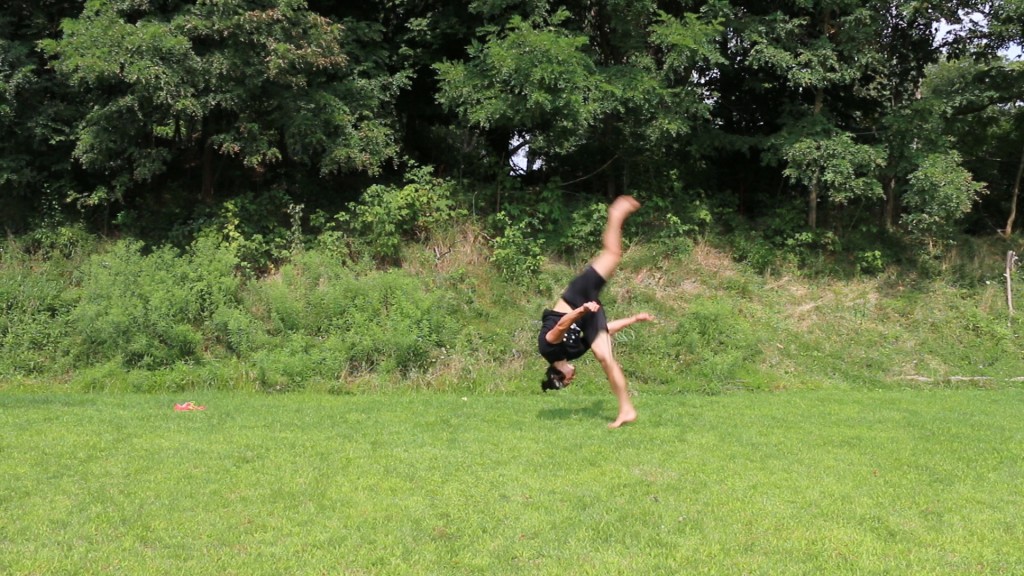
Eject the landing gear.
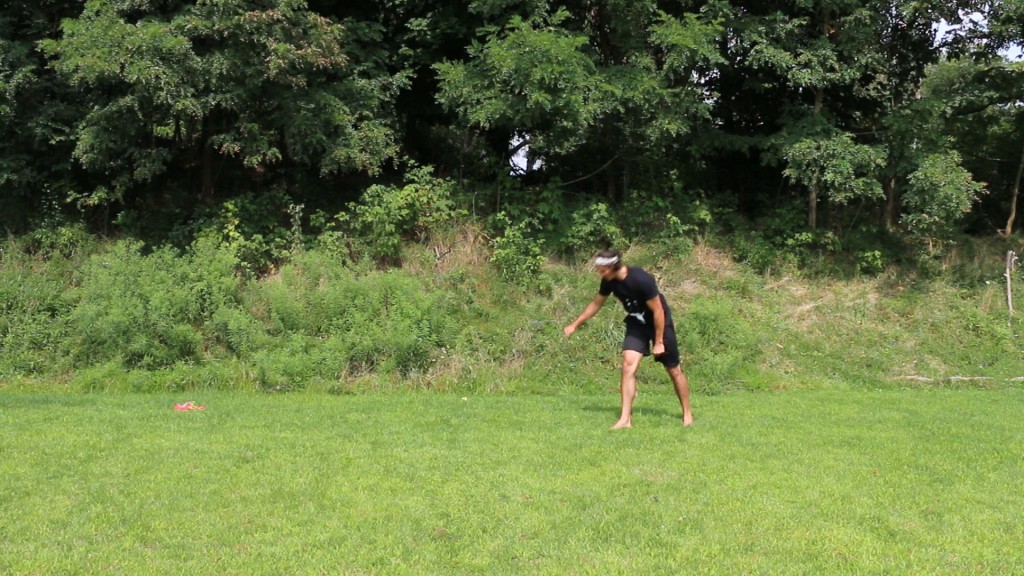
Blur face.
Recap cues:
- Keep your torso in front of your legs!
- Lift the leg high, hard, and behind.
- Bring the left arm across your body — try to keep it in front of your lead knee.
- Slink the right arm over the top — internally rotate the shoulder and let everyone smell your armpit.
Troubleshooting:
Putting your hands down? It’s a natural defense mechanism. Suffice to say, you have to crash. Seriously. Just chuck it. Commit to not putting your hands down. Have someone punch you if you violate this code. And then once you realize that crashing isn’t so bad, you’ll be less prone to bail out.
Bent legs? Yeah, I have this problem to. Part of it is technique. If your technique is shady, it’s harder to get straight legs. Part of it is flexibility. Being able to do the splits is a good indicator of having enough flexibility. Part of it is conscious awareness. If all else fails, you need to queue yourself into keeping them straight. Usually, in order to do this, you have to be able to do the trick rather automatically, so don’t forget the order: learn the trick first, even if it’s ugly, and then polish it up.
Crashing into the ground? Try reaching more forward with your torso, rather than down. It should feel uncomfortable with how forward you’re going.
Your next conquest:
- Axe2Aerial